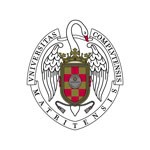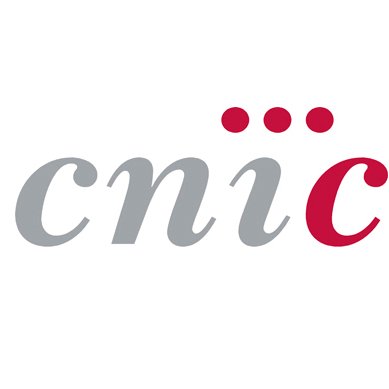INFRAESTRUCTURES
INFRASTRUCTURES AND SERVICES AVAILABLE AT EACH PARTICIPATING CENTER

Rey Juan Carlos University - URJC
Services:
- The Technological Support Center at Rey Juan Carlos University (URJC) is an administrative and management unit under the Vice-Rectorate responsible for research, whose main purpose is to provide scientific and technological support for the research and practical training needs of URJC and, secondarily, its socioeconomic environment.
- Genomics and Flow Cytometry Unit is one of the central services of the Technological Support Center (CAT) at URJC. Its objective is to provide support for research projects in the field of genomics to both URJC research groups and external users. Access to the Unit's services is done through the Servilims computer tool, which can be found on the CAT's website.
- Electron Microscopy Unit: – see Electron Microscopy/Scanning Microscopy Data Sheet - PDF
-
Animal Facility – Veterinary Unit: – see Veterinary Unit Data Sheet - PDF
Animal housing and Comprehensive monitoring system for laboratory animals or CLAMS for food intake, food preferences, body weight, energy expenditure, and indirect calorimetry, as well as for activity studies and biochemical parameters. -
LAFEMEX Laboratory: (REDLabu Registry No. 400)
The Laboratory for Metabolic Phenotyping of Experimental Animals (LAFEMEX), led by Dra. Gema Medina Gómez, offers services for characterizing metabolic diseases in murine models, both in vivo and ex vivo, as well as molecular phenotyping. Its objectives are to promote scientific research, develop self-sufficient facilities with a cost recovery business model, attract funded research programs, and train researchers in standardized approaches to murine metabolism. The laboratory has specialized facilities to provide advanced metabolic phenotyping, including comprehensive monitoring of laboratory animals to assess food intake, food preferences, body weight, energy expenditure, indirect calorimetry, and glucose and insulin tolerance tests.
Available Equipment:- Bioplex
- Glucose meter
- Intraoral X-ray tubes

San Pablo University - CEU
Services:
-
Metabolomics Laboratory (CEMBIO).
The Metabolomics Laboratory is equipped with high-resolution equipment, including liquid chromatography, gas chromatography, and capillary electrophoresis with mass spectrometry detectors, most of which are exact mass, and independent power supply systems (UPS). The Metabolomics Laboratory is the REDLAB laboratory number 260 and is part of the Support Services of San Pablo CEU University, offering its services to internal and external research groups
Instrumentation:
Liquid Chromatography – Quadrupole – Time of Flight Mass Spectrometer (LC/Q-TOF-MS)
Liquid Chromatography – Triple Quadrupole Mass Spectrometer (LC/QqQ-MS)
Dos equipos 1290 Infinity II LC acoplado a sistema 6545/6546 Q-TOF LC/MS para llevar a cabo análisis metabolómico no dirigido permitiendo la elucidación estructural en cualquier tipo de muestra y para una gran variedad de metabolitos utilizando diferentes métodos de LC.
Sistema LC 1260 acoplado a 6470 Triple Quad LC/MS.
Sistema versátil 1290 Infinity acoplado a 6460 Triple Quad LC/MS.
Sistema versátil 1290 Infinity acoplado a 6495 Triple Quad LC/MS, bioinerte.
Diferentes métodos cromatográficos pueden realizarse para la separación de compuestos con diferentes propiedades químicas en análisis metabolómico dirigido con la mejor sensibilidad y selectividad.
Gas Chromatography – Quadrupole – Time of Flight Mass Spectrometry (GC/Q-TOF-MS)
Equipo 7890B GC System acoplado al sistema 7250 Accurate Mass Q-TOF GC/MS con inyección automática de muestras. Permite el análisis metabolómico no dirigido y la elucidación estructural de compuestos polares y apolares en una gran variedad de muestras, como plasma, suero, orina, cerebro, hígado, pulmón, células, entre otros.
Equipo 8890 GC System acoplado al espectrómetro de masas 5977B GC/MSD con un single cuadrupolo y un autosampler 7693A para 150 muestras que permite la determinación y cuantificación de compuestos polares y apolares en cualquier tipo de muestra. Este sistema puede usarse tanto para el análisis metabolómico dirigido como no dirigido. Está acoplado a un robot de preparación de muestras MPS de Gerstel dotado de un equipo de microextracción en fase sólida, SPME, para el análisis de compuestos orgánicos volátiles (VOCs).
Capillary Electrophoresis – Time of Flight Mass Spectrometry (CE/TOF-MS)
Dos sistemas 7100 de Capillary electrophoresis (electroforesis capilar) acoplados a los detectores 6224 TOF MS y 6230 TOF MS para análisis metabolómico no dirigido y separación con gran resolución de compuestos ionizables en diversos tipos de muestras biológicas, con gran precisión de masa y sensibilidad.
Sample preparation
The sample preparation laboratory is equipped with the necessary infrastructure for the treatment of a wide variety of biological samples before relevant multi-platform metabolomic analysis: analytical balances, magnetic stirrers, ultrasonic baths, ultrasonic probes, centrifuges, ultracentrifuges, cryomortars, tissue homogenizer (TissueLyser LT), freeze dryer (oolSafe Pro 110-4 Freeze Dryer), and speedvac (HyperVAC model VC2124 centrifuge vacuum concentrator and Savant SPD121P Speed Vac).
CEMBIO has experience in analyzing all types of biological samples, as a result of multiple collaborations and analyses carried out for external contracts. Robust sample preparation and analysis protocols are available for various biofluids (plasma, serum, urine), feces, tissue samples (adipose, kidney, liver, lung, brain), samples from cell cultures, as well as samples of plant origin (fruits, leaves, and other parts of plants).
Data processing
Metabolomics, the study of small molecules in an organism, is associated with the study of metabolic pathways and serves as a link between genotype and phenotype. Metabolomic analysis generates a large and complex amount of data. Therefore, tools are needed for data analysis to extract relevant biological information. Among the tools used are both open-source software (or proprietary online tools like CEU Mass Mediator) and licensed ones: Mass Hunter Qualitative 10.0; Mass Hunter Quantitative; Mass Hunter Profinder 10.0; Unknowns Analysis; Lipid Annotator; Simca P+; MATLAB; MetaCore.
Specifically, CEU Mass Mediator is a tool created in the group for metabolite searching in different databases (KEGG, HMBD, LipidMaps, Metlin, MINE, and an internal library). It is specifically designed for the use of experimental masses obtained from analysis with mass spectrometry-coupled techniques.
CEU Mass Mediator unifies compounds found in different sources based on InChI Key. It saves time for researchers who have to find compounds in databases one by one and manually unify them, as well as reducing the risk of incorrect manual unification.
As part of our research work, we discuss and apply different available tools for data analysis, perform metabolite identification, and participate in the biological interpretation of the obtained data.
- Experimental Pharmacology (SAI-SFT) / Pharmacology Laboratory.
- Unit for Metabolism and Body Composition Analysis (SAI-UD. METAB).
- X-ray Diffraction and Scanning Electron Microscopy (SAI-DRX-MEB).
- Mass Spectrometry Unit (SAI-SEM).
- Nuclear Magnetic Resonance (SAI-RMN).
- Confocal Microscopy - (SAI-Microcon).

Sols-Morreale Biomedical Research Institute (IIBM)
Services:
- High-Field Magnetic Resonance Imaging and Spectroscopy Service – SIERMAC.
- Genomics Service.
- Radiation Protection Service.
- Histology Service.
- Microscopy and Confocal Service.
- Scientific Imaging Service.
- Indirect Calorimetry Service.
- Non-Invasive Neurofunctional Evaluation Service (NINE).
- Biomedical MRI Sebastián Cerdán.

Complutense University of Madrid – UCM
Services:
- Los Research Support Centers (CAI) provide technical and scientific support aimed at improving researchers' infrastructures, facilitating the development of their projects, and offering advice. This is directed both at UCM staff and at other public and private entities.
- Complutense Bioimaging ICTS, BIOMAC is a Singular Scientific and Technical Facility that offers advanced biological imaging services (anatomical, functional, and molecular) in the fields of Nuclear Magnetic Resonance (NMR), Positron Emission Tomography (PET) along with Computed Axial Tomography (CT).
- CAI Biological Techniques: comprised of technical and human resources ensuring researchers, from both public and private institutions, the opportunity to investigate in Biology and Biomedicine.
- CAI Chemical Techniques: composed of specialized Units offering a wide range of services in different chemical techniques.
-
Research Support Workshops:
- To design, build, and modify pieces and accessories of scientific apparatus.
- Review and repair of laboratory equipment.
-
UCM Animal Facility:
- Center for breeding, supply, and use of experimental animals.

National Center for Cardiovascular Research Carlos III
Technical Units:
- Comparative Medicine Unit: 17200 rodent cages, 1300 zebrafish tanks, 180 rabbit cages, and 36 pig cages. Large animal facilities equipped with operating rooms, catheterization laboratories, and Langendorf system for pig hearts.
- Advanced Imaging Unit: MRI, CT, and PET, with organic chemistry and radiosynthesis laboratories for multimodal contrast agents/nanosystems and 2 platforms for intravital microscopy in rodents. Equipment for small animals (7T high-field MR, nano PET/CT, ultrasound, IVIS, FMT), large animals (3T MRI, PET/CT, ultrasound, OCT), and humans (hybrid PET/MRI, 256-slice CT, ultrasound).
- Genomics Unit: Equipped with 3 Illumina NGS instruments: HiSeq2500, GAIIx, and MiSeq. Innovative research on single-cell genomics using Fluidigm C1 Single-Cell Auto Prep microfluidic system. 10Xgenomics.
- Flow Cytometry Unit: 3 state-of-the-art flow cytometers; 3 high-speed sorters; automated magnetic sorter; liquid handling workstation; automated confocal microscope.
- Viral Vectors Unit: Specialized unit in recombinant viral vectors (lentivirus and AAV).
- Proteomics Unit: Analysis, identification, quantification, and characterization of proteins using state-of-the-art mass spectrometers (QTRAP LC/MS/MS; Orbitrap XL ETD Hybrid Ion Trap-Orbitrap; Orbitrap Elite Hybrid Ion Trap-Orbitrap; Q Exactive Hybrid Quadrupole-Orbitrap; Orbitrap Fusion Quadrupole ion trap-Orbitrap), and 2 high-performance HP Proliant DL980 clusters.
- Microscopy Unit: Microscopes with multiphoton excitation sources and FLIM detectors (Zeiss 780, ISS-ALBA); super-resolution gSTED-3X and dSTORM; multicolor TIRF; 4 state-of-the-art multiline confocal microscopes; 4 wide-field/bright-field microscopes.
- Bioinformatics Unit: High-throughput data analysis: 2 High-Performance Clusters (HPC), one with >1600 threads and 4.5TB RAM and a second HPC for Galaxy Portal with 120 threads and 0.5TB RAM.
- Pluripotent Cell Technology Unit: Manipulation, genetic modification, and differentiation of human and mouse pluripotent stem cells with 2 specialized culture rooms.
- Transgenesis Unit: Production of genetically modified mice, with 2 sets of state-of-the-art microinjection systems; 4 stereomicroscopes (1 with fluorescence); laser ablation system; 2 microforges; programmable biofreezer electroporator; 4 CO2/O2 incubators, one for in vitro fertilization.